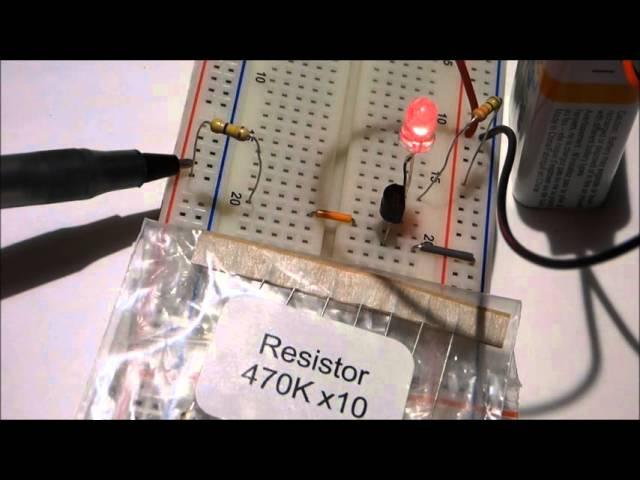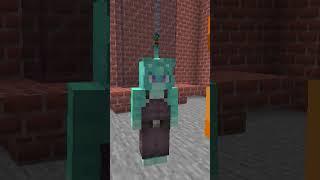
NPN 2N2222 transistor component as switch circuit with schematic tutorial. 2N2222A
Комментарии:

Thank you so much!! You saved me! Tomorrow is my exam and I was unable to explain my model.. Not anymore though! Thanks again!
Ответить
thank u thank u.... words are not enough but "thanks a lot!!!!"
Ответить
I'm still having trouble w/ my bread board. I'm trying to recreate your project using 3 AA batteries and 1 110Ohm resistor and a 220Ohm resistor. I'm very new to working w/ electronics and am still scratching my head about how to use a NPN transistor.
Ответить
I did not know Norm McDonald was an electronics teacher as well :) Thanks for the info !
Ответить
Where can i find this transistor 2n2222 ,,,,,please !!!quickly answer ??!
Ответить
Hello, nice tutorial!!! Please, a have a question: any transistor behaves like 2N2222 as a switch on-off, as you showed in your video??? That is, I can replace the 2N2222 with other transistors as well???? Thank you for any information about it!
Ответить
wow very informative can you also make a video about BS 170 transistor and BC557
Ответить
Awsome video but why 470K ????????
Ответить
Actually the A isn't a extra. The A means a little better transistor, although a 2N2222 and 2N2222A can be interchanged in 99,% of all circuits calling for a 2N2222 or 2N2222A.
Ответить
Good video.I like youre video
Ответить
So this is where Norm McDonald is hiding 🍺
Ответить
Good info, I'm just too ignorant to understand the amplification part.
Ответить
Very great! Learned a lot
Ответить
How did you determine what resistance to use to supply power to the base ??
Ответить
Best explanation I've seen so far
Ответить
Videos like yours explain details that are so important for beginners to understand electronics that many teachers don't take the time to cover.
Ответить
I have a question for You and perhaps You can explain it. when looking at an NPN transistor (Flat side) of transistor facing me some say it is from left to right Emitter Base Collector, while others say it is Collector Base Emitter. , I know how to determine with a meter but why do people say differently?
Ответить
Why is the 680-ohm resistor on the cathode side of the LED instead of on the anode side on the supply side?
Ответить
Very clear explanation
Ответить
Thanks for the video. Sorted out a project, as I was having trouble with a 2N2907.
Ответить
THANK YOU I GOT IT FINALLY :D
Ответить
Enjoying your videos. In using a PNP transistor ( ), it normally allows current to flow except when you supply the base with a little more current than the collector? I wasn’t able to get the PNP to work in a reliable way. I did connect the base to ground and I’m pretty sure it melted?! Could you explain why that happed?
Ответить
Just noticed I watched this 3 years ago which is the last time I got back to trying to understand electronics!
Its getting easier(ish). I did the circuit the put the load on the emitter to see what happens which makes the led glow dull before hitting the switch then its bright. Im guessing theres a small current from B to E causing that which makes sense.
Is there something on the data sheet that gives the voltage required for the Base to keep it switched off? Can you get away with just putting a high value resistor for basic 'hobby' type circuits?

Not only did you explain the circuit well but you all had a nice sidebar about the different transistors (NPN, PNP, etc), thank you very much!
Ответить
how can you make the circuit versatile for bjt and mosfet?
Ответить
You explain it very well by far one of the best for beginners just got my first bread board kit and I am banging my head on the table. What would be the best book to buy to learn the basics
Ответить
I thinks I can dos it, thks.
Ответить
Thank you for this. I don't know why I had such a hard time finding a basic 2n2222 circuit that demonstrates the basic principle of transistors
Ответить
Can we put load at low side in npn transistor?
Ответить
I find the values of resistors used to be an oddity. If the transistor is in saturation when on (as it must be if it is operating as a switch), then I calculate the collector current to be approximately (9V - 2V) / 330R = 21mA. The base current will be about (9V - 0.7V) / 470K = 0.018mA. The implies a DC current gain of 21/0.018 = 1,200 approximately. I find it incredible that a 2N2222 exists with that amount of current gain, and if you happened to have one with that much gain, it is highly misleading to imply that other samples would behave the same. The only explanation I can see is that the transistor is not saturating, and that the LED lights brightly enough with just a couple of mA through it. You should measure the voltage at the collector to see what is really happening.
Ответить
😥I've watched like 20 different videos looking at transistors, push buttons, and voltage dividers to try and get a damn and gate working. 90% of them didn't show a working example, just theoretical explanations which didn't help at all.
Thank you for letting me get this to work after like 5 hours, I'd been trying to connect the emitter to the led thinking it would, well, EMIT power to it.
Connecting it "backwards" to let power flow to ground worked like f'ing magic.

Thanks for being the first of 20 videos to show me a working example that I can follow!
Ответить
Thank You
Ответить
great explanation of how transistors work. however, is it me or has anyone noticed the schematic / diagram being wrong. shouldn't the resistor be between the voltage source and the LED, and not vice versa? or is this something I'm not understanding right?
Ответить
Excellent explaination !!! now I know what npn stands for lol learn everyday !!!
Ответить
Is there anything significant about the 2N2222 designation? Why can't I substitute a ZTX751 ?
Ответить
Why are the pin outs different from to data sheet? From left to right on data sheet it’s CBE?
Ответить
Back again 2 years later!!! But better at understanding your reply from last time. Hope all is well with you and yours and works going well. All the best
Ответить
Very well explained. Thank you.
Ответить
you have selected a 470k resistor for the base... is there any way to calculate the value????
Ответить
Horrible horrible audio quality 👎👎
Ответить
I don't see what side is Led on there.
Ответить
THANKS!!! I finally understand how it works !
Ответить

























